#diurnal moth
Explore tagged Tumblr posts
Text
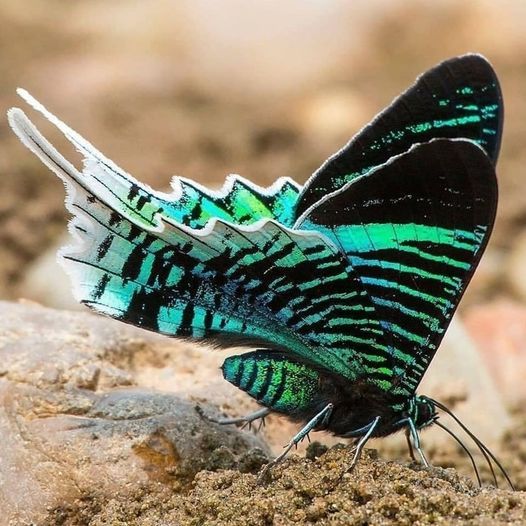
Green-banded Urania Moth (Urania leilus), family Uraniidae, found in South America and the Caribbean
Diurnal Moth
photograph by butterflyrealm
3K notes
·
View notes
Text
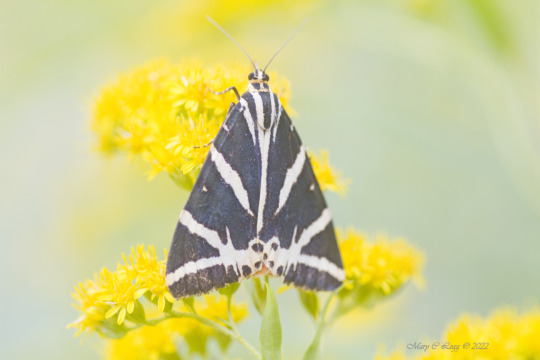
Jersey Tiger Moth, Euplagia quadripunctaria Canon 400D EF 00 2,8 f/2.8 1/250 iso: 200
#Srbsko#Czech Republic 5/20/2016#mothsmatter#Erebidae#noctuidae#diurnal#MothsMatter#moths#Lepidoptera#insects#invertebrates#Macro#Grasslands#macrophotography#insectphotography#insect#canon#butterflies#savebutterflies
2 notes
·
View notes
Text
Ares: What do you think of butterflies?
Athena: Did you get hit in the head again?
Ares: I'm just curious.
Athena: I suppose they're fine. They're like diurnal moths.
Ares: I was afraid you'd say that.
Athena: Why?
Ares: Owls eat moths, don't they?
Athena: What are you implying?
Ares: Thanatos turned into a butterfly a couple days ago.
Athena:...
Ares: Said he wanted to enjoy nature.
Athena:...He didn't go to Athens, did he?
Ares: He did.
Athena:...
Ares: You ate my friend.
Athena: I was wondering why that pellet was noisy.
Ares: I don't have enough friends for you to start eating them, Athena.
Athena: If you eat one of mine, we'll be even.
Ares (walks away)
Athena (nervously): Where are you going?
Ares: To Ithaca.
Athena: I was joking!
#greek mythology#ares god of war#epic the musical#greek myths#athena goddess of wisdom#athena#ares#greek gods#athena and ares#ares and athena#war siblings#thanatos
250 notes
·
View notes
Text
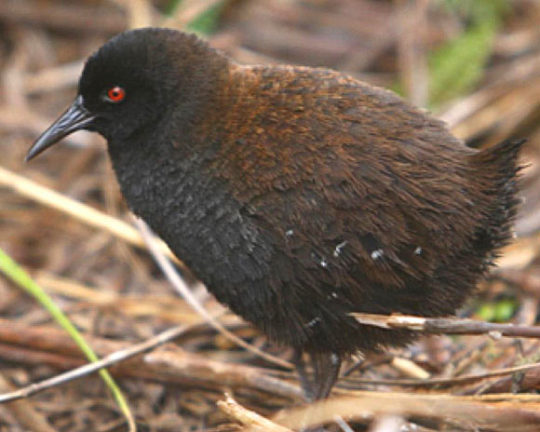


Access Denied: The Inaccessible Island Rail
The Inaccessible Island rail (Laterallus rogersi) is a rarely seen member of the rail family, Rallidae. Part of the reason for its obscurity is the place in which it resides: Inaccessible Island, part of the Tristan da Cunha archipelago in the southern Atlantic Ocean. These islands are extremely remote, and until 2019 it was unclear how L. rogersi even came to be there. We now know that the species colonized the island some 1.5 million years ago, originally coming in from South America and subsequently losing its ability to fly.
In addition to its unique evolutionary history, the Inaccessible Island rail's greatest claim is that it is the smallest flightless bird in the world. Individuals weigh between 35 to 49 g (1.2–1.7 oz) and can be 13 to 15.5 cm (5.1–6.1 in) long from beak to tail. Members of both sexes are dark brown with red eyes; some may have white striping along the underbelly or wings. Females tend to be slightly smaller and lighter in color than males.
The Inaccesible Island rail can be found on all habitats on the island in which it inhabits; these include low mountains and fern brush though the species is most abundant in the grasslands that grow close to the rocky shore. Within these habitats, L. rogersi is largely diurnal. They freely forage for invertebrates, including earthworms, beetles, and moths, as well as seeds and berries; as they have no natural predators they have few defenses against potential threats, although they can run extremely fast when alarmed.
Adults are highly territorial, and when two rivals of either sex encounter each other they will display by lowering their heads, circling each other, and calling loudly until one of them concedes. Males and females mate for life, and build nests in the tall grass. The breeding season is between October and January, in late summer, and females lay a clutch of 2 eggs. Both parents take turns incubating the eggs until they hatch. Chicks can be vulnerable to predation by the migratory brown skua, so parents guard the nest fiercely. The time it takes for chicks to fully mature is unknown, as is the average lifespan in the wild.
Conservation status: The Inaccessible Island rail is considered Vulnerable by the IUCN. The island's population is believed to stand at about 5,600 adult birds. While the island's ecology is currently stable, researchers believe the species would be seriously imperaled if invasive species such as house mice, feral cats and brown rats were introduced. Access to the island is currently restricted, and the island has been declared a nature reserve by the Tristan da Cunha Island Council.
If you like what I do, consider leaving a tip or buying me a kofi!
Photos
Peter G. Ryan
#inaccessible island rail#Gruiformes#Rallidae#rails#birds#islands#island birds#grasslands#grassland birds#Atlantic ocean#animal facts#biology#zoology
955 notes
·
View notes
Note
If the Summer Court/Light Court are all butterflies, would that make the Winter/Dark Court beetles/spiders?
The Summer courtiers generally have diurnal wings, though it's not always the case. Butterflies are the most common but you can get damselflies, dragonflies, bees, grasshoppers, etc etc. If you'd expect to see it bumbling around a warm field full of wildflowers, you can find it in the Summer court.
In the Winter court you tend to see nocturnal wings, but not always - the general rule is that the wings are somewhat cold resistant. Fluffy moths, wood wasps, fireflies, many MANY varieties of hardy beetle. Summer courtiers have to do well to protect their wings when visiting Winter; it's not uncommon to have parts of your wings freeze and die.
It's the fae world. Things don't always make sense.
239 notes
·
View notes
Text

Okalivember day 27, eyespots!
The green-mantled zviarakulla lives in large flocks in tropical rainforests. When threatened, they all take off at the same time, taking a second to flash the eyespot on their wings to startle the predator.
The lucidum moth has reflective iridescent eyespots. Mostly diurnal, they live in open forest environments, taking advantage of areas of dappled light to make their "eyes" flash before retreating to the shadows.
The eyespot atizo is a large marine crustacean. It lives near coasts, and is very active, flittering its antennae about frantically in search of food, and swimming away extremely fast when it needs to.
#okali#fantasy#wandering okali#art#graphi's things#worldbuilding#species#speculative biology#specbio#xenobiology#fantasy biology#fantasy creature#creature design#okalivember
68 notes
·
View notes
Note
do you know any cool moth facts? i totally understand if not, i just wanna get over my phobia by noticing how cool they r ^_^
thanks ! have a good day
“moths” is a huge category of animals, so if you were asking for cool adaptations in particular species you’ll have to be more specific because it’s impossible for me to know where to start!
but a few general moth facts:
moths have been around a long time, and some basal types still exist that have mandibles (like the usual bug mouthparts you see in beetles/ants) instead of a tube proboscis for drinking nectar like most of the big moths you see. these moths are all super tiny and mostly eat pollen.
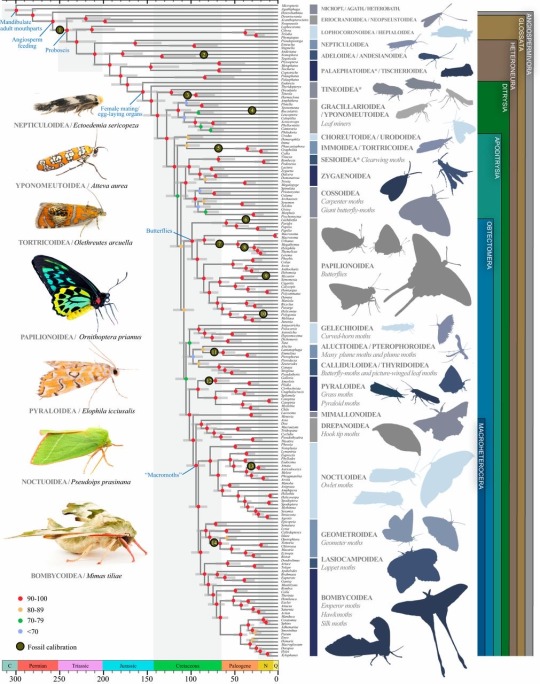
as you can see from this phylogenetic tree, butterflies are moths! or rather “butterfly” is just the English word for a particular group of diurnal Lepidoptera, sort of like how birds are a particular group of dinosaurs (but it’s not common to refer to them as such outside of taxonomy or a joke)
most moths are nectar-feeders, but others feed on decaying fruit, tree sap, or honeydew, and silkmoths and many hawkmoths do not feed at all as adults, relying on larval fat reserves to power them through their brief adult lives
there are numerous diurnal moths, beyond just the butterflies. family Uraniidae are some of the most dramatic:
moths have some of my favorite mimicry examples of any group of insects:
many moths mimic bird poop (birds aren’t likely to look for meals out of their own poop!) but Macrocilix maia takes it a step further and has patches of colored scales that look exactly like red-eyed, shiny-winged flies eating the bird poop!
a number of tiny moths��� wings mimic jumping spiders, which might seem an odd choice until you realize that jumping spiders—predators of these moths—have excellent facial recognition. even if the jumpers would eat another spider, the oOOo pattern tricks them into thinking their that spider is looking right at them, and can’t be taken by surprise.
phylotree from: https://www.pnas.org/doi/10.1073/pnas.1907847116
moth enthusiasts: feel free to add cool moth facts if you’d like!
660 notes
·
View notes
Text

This is a stunning image capturing a hummingbird hawk-moth (Macroglossum stellatarum) in mid-flight as it approaches a cluster of vibrant lantana flowers. The moth, often mistaken for a hummingbird due to its rapid wing beats and hovering ability, extends its long proboscis to extract nectar from the blooms. The background is a soft blur of green, highlighting the intricate details of the moth's patterned wings, furry body, and curled feeding tube. The lantana flowers, with their mix of yellow and orange hues, contrast beautifully with the dark, rich greenery. Hummingbird hawk-moths are fascinating creatures known for their diurnal (daytime) activity, which sets them apart from many other moth species. Their ability to hover and dart between flowers makes them crucial pollinators. This image perfectly captures the essence of nature’s delicate yet dynamic interactions.
#floral#leaves#green#pink flowers#plants#roses#yellow flowers#cottagecore#whiteflowers#nature#flower photography#flower aesthetic#trees#birds#wild birds
34 notes
·
View notes
Text
Today's bug is:




Hemaris Thysbe!
Commonly known as the hummingbird clearwing, this little guy is part of the family Sphingidae, commonly known as hawkmoths.
They're native to North America, and are most commonly found in the eastern USA and southern Ontario [hey! that's where I am! :D]. They're also migratory species. Neat!
Colouration can vary, but typically they have an olive green back, a red abdomen, and a cream underside. Their wings are mainly red with clear windows.
These little guys get their namesake, along with their colouration, from the fact that when they feed they hover in the air instead of settling! Therefore, hummingbird moth.
Unlike most moths, the hummingbird moth is diurnal! They are most active during the hottest parts of the day, but stay out until sunset. Other than that, little is known about their behaviour.
Curious little critters! Go kiss a bug :3
24 notes
·
View notes
Text


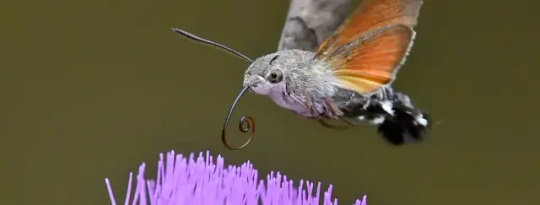









Macroglossum stellatarum, better known as the hummingbird hawk-moth is a species of hawk moth found across temperate regions of Eurasia from as far west as the Iberian Peninsula and British Isles to as far east as the Korean peninsula and Japanese archipelago, and as far north as the steppes of Russia to as far south as Northern Africa. Here they inhabit gardens, parks, fields, meadows, and woodlands. These diurnal insects are also notably active at dusk and dawn. Like there name sakes, these moths feed primarily upon nectar-rich flowers which they drink from using there long proboscis. As they avoid competition with other insects by going for flowers with longer tubes, these flowers inturn typically present the feeding animal a higher nectar reward. Their larvae usually feed on bedstraws or madders (Rubia) but have been recorded on other plants such as those in the genus Centranthus, Stellaria, and Epilobium. Reaching around 1.6 to 1.8 inches (40 to 45mm) in size, hummingbird hawkmoths sport a long flexible proboscis, large well developed eyes, and a wide body. The forewings are brown, with black wavy lines across them, while the hindwings are orange with a black edge. Hummingbird hawkmoths are most active through spring, summer, and fall, but adults typically do not survive the winter except in the southern parts of there range where they may overwinter in crevices, under rocks, inside trees, and inside buildings. Adults typically produce two to four broods each per year. Each brood is comprised of up to 200 glossy pale green eggs, which hatch some 5 to 8 days after laying. Newly hatched larvae are clear yellow, and in the second instar assume their green coloration. The larva is green with two grey stripes bordered in cream along the sides and with a horn at the rear end typical of sphingids. The horn is purplish red, changing to blue with an orange tip in the last instar. The pupae are pale brownish with a prominent, keeled proboscis, and two sharp spines at the end of the cremaster. They are enclosed in loose silken cocoons among the host plant debris or on the ground among leaf litter. Depending on there location an adult hummingbird hawkmoth may live 3 weeks to 7 months.
#pleistocene pride#pliestocene pride#animal#animals#animal facts#zoology#bug#insect#hummingbird#hawk#moth#hawkmoth#hummingbird hawkmoth#Entomology
25 notes
·
View notes
Text
87 notes
·
View notes
Text

Satin-green Forester Moth (Pollanisus viridipulverulenta), family Zygaenidae, SW Australia
Diurnal Moth
photograph by Boobook48
549 notes
·
View notes
Text
Heart as a moth and Mind as a butterfly, specifically the purple thorn moth for Heart and the purple emperor butterfly for Mind cuz ya know, moths are nocturnal while butterflies are diurnal soooo
#plushy rambles#chonnys charming chaos compendium#cccc#cccc heart#cccc mind#aka my perfect excuse to connect 2 of my interest#I adore animals and I love cccc guys#(on another note I do love the bird Heart stuff too like omg HELL YEAH!!)
30 notes
·
View notes
Text
Alien Abduction AU - Species list + info
This is a list of the alien species and traits that I've come up with for some of the TWST characters - I mostly mushed certain animal traits together and built off of that lol. If anyone has any thoughts about my ideas then do feel free to let me know! My askbox is open for messages!
[POSTED A DRAFT BY MISTAKE - IMMA EDIT AND REBLOG THIS ONCE IT'S DONE]

Edonal
Hegehog-like aliens with a similar build to caterpillars.
Edonals are a species that is shorter by average, standing at an average height of 4'8-5'6 - although someay be taller or shorter depending on genetics.
They have eight limbs - two to four being used for walking whereas the others function as hands. Their choices on how they use their limbs can be affected by their need or desire to multitask, or the need to have extra stability for whatever reason.
Edonal communities have a mix of diurnal and nocturnal Edonals in order to maintain a smoothly running society that remains active both night and day.
Riddle, Sam

Avian
Trey (Violet-Green Swallow), Rook (Martial Eagle), Crowley (Crow)

Mairan
Butterfly or Moth-like aliens with more human-looking limbs and faces.
Mairans have eerily human-like faces and limbs, however they are often far more slender to allow their wings to lift them off of the ground. Their body - besides their wings - is protected by chitinous plating and their mouths actually open up more similarly to mandibles than human mouths.
Some species of Marian may grow soft, fluffy fur on top of their chitinous plating as an adaptation to survive colder climates or to blend in better with their surroundings.
Cater (Orange-Tipped Oakworm Moth), Vil (Mourning Cloak Butterfly), Epel (Chalk Hill Blue Butterfly)

Nelsian
Fox-like aliens with much shorter, rabbit-like, tails and stronger legs. They are also, on average, much fluffier than normal foxes unless they're adapted specifically for hot environments.
Ace (Red Fox), Kalim (Fennec Fox), Idia (Silver Fox), Ortho (Cybernetic Silver Fox)

Thesti
Canine species with a large range of appearances depending on their genetics. 'Thesti' is generally seen as an umbrella term containing many subspecies.
Deuce (Pitbull), Ruggie (Hyena), Jack (Wolf), Sebek (Cavalier King Charles Spaniel), Silver (Saluki)

Lonkat
Feline aliens with Scorpion tails and chitinous plating in some areas of the body. Lonkat Royalty is made up of those who are similar to Terran 'big cats' - whereas common society and lesser nobles are more similar to either domesticated or 'lesser cats' Such as Cheetahs or Pallas's Cats.
Leona (Lion), Trein (Persian Cat)

Chel'ir
An aquatic species that serves as an umbrella category for many subspecies.
The Chel'ir are the newest species to have joined the galactic union.
Jade, Floyd, Azul

Rilkol
Jamil

Thrican
Malleus, Sebek

Yelten
Bat-like
Lilia
#disney twisted wonderland#disney twst#twst#twisted wonderland#twst au#twisted Wonderland au#twst alien AU#twisted Wonderland Alien AU
35 notes
·
View notes
Text
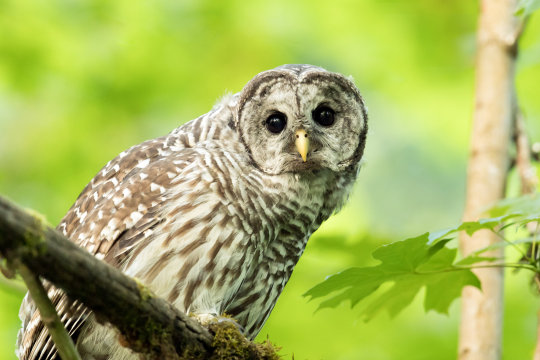
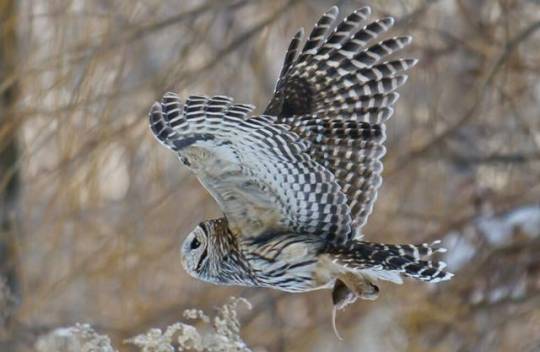

The Basics on the Barred Owl
Strix varia goes by many names: the barred owl, the northern barred owl, the striped owl, the hoot owl, the eight-hooter owl, or the who-cooks-for-you owl. The last few names refer to the owl's distinctive hooting call, which is often followed by what is often described as 'maniacal laughter'. The barred owl is native to the old-growth deciduous and coniferous forests of eastern North America, though in recent decades the species' range has expanded across the Rocky Mountains into the Pacific Northwest.
The striped owl can be hard to spot, due to its white and brown plumage. The back and wings are brown with white barring, while the chest is dull white or gray with brown streaks. The face is surrounded by a gray-white disk and framed with a brown mask. This coloration allows the barred owl to blend in seamlessly with the upper forest canopy where it resides-- although some populations in the southern parts of its range have been known to carry a pink tint due to the amount of shrimp they eat. However, S. varia is not a small birds; adults can be anywhere from 40 to 63 cm (16 to 25 in) in length, with a wingspan of 96 to 125 cm (38 to 49 in), and weigh about 630 g (22.2 oz) on average.
Like most owls, the barred owl is primarily nocturnal, though they can be fairly active during the day. When dormant, they roost in tree hollows or nests abandoned by other birds. At night, adults are active in guarding their territory and hunting for small mammals, birds, reptiles and amphibians, and large arthropods like moths and crayfish. The only natural predator of adult hoot owls is the great horned owl, which will often drive S. varia from their territory. Eggs and nestlings are sometimes prey for raccoons, weasels, and diurnal birds of prey.
S. varia mates for life, and couples are fiercely defensive of their territories and nests. Courtship and territory establishment begins in late winter, and continues from February to April. Males attract mates with their distinctive who-cooks-for-you call, and further entices prospective females with head bobbing and bowing. Together, the pair then establishes a roost and the female lays up to 5 eggs. She alone incubates the clutch for about a month, while the male hunts for her. After hatching, the female continues to care closely for the chicks for another 2-3 weeks, at which time she joins the male in hunting.
Hatchlings quickly become active, and are prone to falling out of the tree, but even at only 4 weeks old they are able to climb back up the trunk. Siblings have been recorded as being tight-knit, often staying close together in the nest and when learning to fly. Fledging begins at about 6 weeks old, and by 10 weeks young are capable of short flights. However, parents continue to provide care to their chicks until they're 6 months old, at which time the young owls leave (or are forced to leave) and establish their own territories. Mortality in barred owls is highest in their first year of life, and once out of this perilous stage individuals may live to be up to 18 years old in the wild.
Conservation status: The barred owl is a common species, and is considered by the IUCN to be Least Concern. The expansion of its range into the Pacific Northwest is considered one of the major causes of the decline of the northern spotted owl.
If you like what I do, consider leaving a tip or buying me a ko-fi!
Photos
Mick Thompson
Hal Thrachtenberg
Mark Musselman
#barred owl#Strigiformes#Strigidae#earless owls#true owls#owls#birds#deciduous forest birds#evergreen forest birds#north america#eastern north america#biology#zoology#ecology#animal facts
197 notes
·
View notes
Note
can't send an image on anon but bella moths are lovely oddities. they're diurnal, they eat poisonous seeds to make themselves dangerous to predators, and they're quite colorful


bro holy shit they're gorgeous. that's so fucking cool tjank you so much
24 notes
·
View notes



